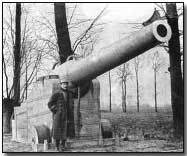A Sonnet by Sydney ~ Struggle of Mind and Body
 The sonnet is a well-known form of poetry and favorite of poets in the European tradition. Often used to express love, the sonnet compresses much passion into a "little song."
The sonnet is a well-known form of poetry and favorite of poets in the European tradition. Often used to express love, the sonnet compresses much passion into a "little song."Please learn the different forms and characteristics of the Italian, English, Spenserian, and Modern sonnets. By doing so you will have a grasp of sonnets that will assist you in identification of poetry and understanding of these "little songs."
Here's one sonnet as part of a series that the Elizabethan poet Sir Philip Sydney wrote. Read this sonnet and identify the form (Italian, English, etc.). Then identify how the form assists Sydney in expressing his struggle between love/lust/sex and ideas/mind/eternity, or between Eroticism and Platonism. Which does Sydney choose? Why?
Leave me, O love which reachest but to dust,
And thou, my mind, aspire to higher things;
Grow rich in that which never taketh rust:
Whatever fades but fading pleasure brings.
Draw in thy beams, and humble all thy might
To that sweet yoke where lasting freedoms be,
Which breaks the clouds and opens forth the light
That doth both shine and give us sight to see.
O, take fast hold; let that light be thy guide
In this small course which birth draws out to death,
And think how evil becometh him to slide
Who seeketh heaven, and comes of heavenly breath.
Then farewell, world! thy uttermost I see:
Eternal Love, maintain thy life in me.





